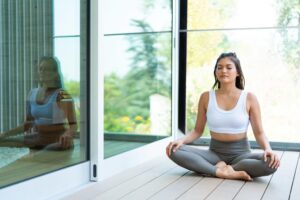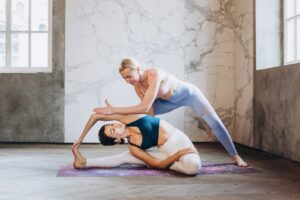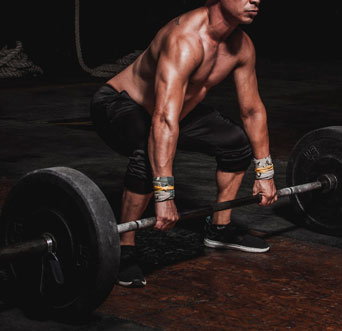Flexibility is a crucial component of overall fitness and well-being. It not only enhances physical performance but also reduces the risk of injuries, improves posture, and promotes relaxation.
Yoga, an ancient practice that combines physical postures, breath control, and meditation, is a powerful tool for increasing flexibility.
In this article, we will explore how yoga can help improve flexibility and provide insights into some key yoga poses that can help you become more flexible.
Understanding Flexibility
Flexibility refers to the range of motion in your joints and muscles. It is influenced by various factors, including genetics, age, and physical activity level.
While some individuals are naturally more flexible, anyone can work towards improving their flexibility through consistent practice.
Yoga and Flexibility
Yoga is a holistic approach to physical and mental well-being that offers a wide range of benefits, including increased flexibility. Here’s how yoga helps enhance flexibility:
- Stretching: Yoga involves a series of stretching exercises that target different muscle groups. These stretches help to lengthen and loosen tight muscles, gradually increasing flexibility.
- Balancing Strength and Flexibility: Yoga encourages a balance between strength and flexibility. While some poses focus on building strength, others prioritize stretching and flexibility. This balance prevents overstretching and injury while improving overall mobility.
- Mind-Body Connection: Yoga emphasizes mindfulness and breath awareness. This mental focus helps individuals connect with their bodies, allowing them to better understand their limits and gradually push beyond them.
Key Yoga Poses for Flexibility
- Downward-Facing Dog (Adho Mukha Svanasana): This pose stretches the hamstrings, calves, and shoulders while also lengthening the spine.
- Cobra Pose (Bhujangasana): Cobra pose opens up the chest, stretches the abdomen, and strengthens the back muscles.
- Forward Fold (Uttanasana): Forward folds stretch the hamstrings and lower back while also calming the mind.
- Pigeon Pose (Eka Pada Rajakapotasana): Pigeon pose is an excellent hip opener, releasing tension in the hip flexors and glutes.
- Butterfly Pose (Baddha Konasana): This pose targets the inner thighs and groins, improving flexibility in the hip area.
- Bridge Pose (Setu Bandha Sarvangasana): Bridge pose stretches the neck, chest, spine, and hip flexors, promoting flexibility in these areas.
Tips for a Successful Yoga Practice
- Consistency is Key: To see significant improvements in flexibility, practice yoga regularly. Aim for at least three to four sessions per week.
- Listen to Your Body: Pay attention to your body’s signals and avoid pushing yourself too hard. Progress may be slow, but safety should always come first.
- Warm-Up: Begin your yoga practice with a gentle warm-up to prepare your muscles for stretching.
- Breath Control: Coordinate your breath with each movement, as this will enhance your ability to relax into the stretches and increase flexibility over time.
Conclusion
Yoga is a transformative practice that can significantly improve your flexibility while offering numerous other physical and mental benefits.
Incorporating yoga into your fitness routine can help you unlock your body’s full potential and lead to a more flexible, healthy, and balanced life.
So, roll out your yoga mat, take a deep breath, and embark on a journey towards increased flexibility and well-being through the practice of yoga. Namaste!




